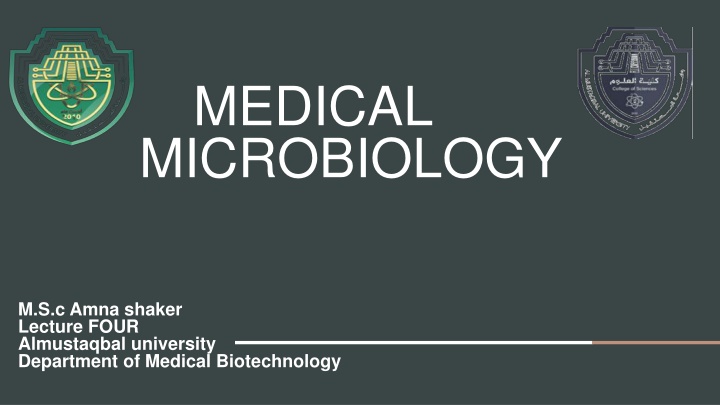
Laboratory Diagnosis of Enteric Fever, Cholera, Salmonella, Shigella, E. coli
Learn about the laboratory diagnosis methods for enteric fever (typhoid), cholera, salmonella, shigella, and pathogenic strains of E. coli. Topics include blood culture, Widal test, stool culture, PCR, serotyping, and more.
Download Presentation

Please find below an Image/Link to download the presentation.
The content on the website is provided AS IS for your information and personal use only. It may not be sold, licensed, or shared on other websites without obtaining consent from the author. If you encounter any issues during the download, it is possible that the publisher has removed the file from their server.
You are allowed to download the files provided on this website for personal or commercial use, subject to the condition that they are used lawfully. All files are the property of their respective owners.
The content on the website is provided AS IS for your information and personal use only. It may not be sold, licensed, or shared on other websites without obtaining consent from the author.
E N D
Presentation Transcript
MEDICAL MICROBIOLOGY M.S.c Amna shaker Lecture FOUR Almustaqbal university Department of Medical Biotechnology
2 LABORATORY DIAGNOSIS OF ENTERIC FEVER; CHOLERA, SALMONELLA: SHIGELLA, E.COLI Enteric fever also known as typhoid fever, is a common infectious disease in low and middle income countries. It is the commonest bacterial cause of fever .About 14 million people are affected annually, mainly in low and middle income countries . How is it diagnosed? Enteric fever is mainly a clinical diagnosis based on history and examination. A gradual onset of fever, particularly with one or more abdominal symptoms.
3 The laboratory diagnosis for Enteric Fever (Typhoid and Paratyphoid) : 1-Blood Culture: Gold standard for early diagnosis; detects Salmonella Typhi or Paratyphi. 2- Widal Test: Serological test detecting antibodies against Salmonella antigens (O and H). Limited by false positives/negatives. 3- Bone Marrow Culture: More sensitive than blood culture, especially in treated cases. 4- PCR: Detects Salmonella DNA; highly specific and sensitive.
4 The laboratory diagnosis for Cholera 1. 1. Stool Culture: Confirms Stool Culture: Confirms Vibrio cholerae media like TCBS agar. media like TCBS agar. 2. 2. Rapid Diagnostic Tests (RDTs): Detect Rapid Diagnostic Tests (RDTs): Detect cholera antigens in stool; useful in outbreaks. in stool; useful in outbreaks. 3. 3. Dark Dark- -Field Microscopy: Field Microscopy: Observes motile Observes motile vibrios stool samples. stool samples. 4. 4. PCR: Identifies PCR: Identifies cholera toxin genes cholera toxin genes. . Vibrio cholerae; uses selective ; uses selective cholera antigens vibrios in fresh in fresh
5 The laboratory diagnosis for Salmonella : 1. 1. Stool Culture: Primary diagnostic method; isolates Stool Culture: Primary diagnostic method; isolates Salmonella from feces. from feces. 2. 2. Blood Culture: Used in systemic infections. Blood Culture: Used in systemic infections. 3. 3. Serotyping: Identifies specific Serotyping: Identifies specific Salmonella 4. 4. Molecular Tests: PCR for rapid detection. Molecular Tests: PCR for rapid detection. Salmonella Salmonella serovars. serovars.
6 The laboratory diagnosis for Shigella: 1- Stool Culture: Gold standard; isolates Shigella species. 2- Microscopy: Detects pus cells and red blood cells in stool. 3- PCR: Confirms Shigella DNA; useful in outbreaks. 4- Serotyping: Differentiates Shigella specie
7 The laboratory diagnosis for E. coli (Pathogenic Strains) : 1. 1. Stool Culture: Identifies pathogenic strains like EHEC, ETEC, etc. Stool Culture: Identifies pathogenic strains like EHEC, ETEC, etc. 2. 2. PCR: Detects virulence PCR: Detects virulence genes (toxin genes (toxin in EHEC). 3. 3. Serotyping: Differentiates pathogenic from commensal strains. Serotyping: Differentiates pathogenic from commensal strains. 4. 4. ELISA: Detects toxin in stool sample ELISA: Detects toxin in stool sample. in EHEC).
THANK YOU





















